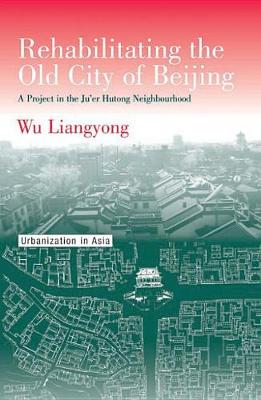Urbanization in Asia S.
1 total work
Decades of revolution and turmoil in China, along with unprecedented economic growth since the early 1990s, have had disastrous consequences for Beijing, one of the oldest and greatest capital cities in the world. In Rehabilitating the Old City of Beijing, renowned academic, architect, and urban planner Wu Liangyong argues eloquently for "organic renewal," in which the drive to raze the old city and build a new one is tempered by a respect for local and historical identity, using the project in the Ju'er Hutong ("Chrysanthemum Lane") neighborhood as an example.
Wu describes Beijing's place in the history of Chinese dynastic capital planning, considers planning in Beijing since the 1949 revolution, the problem of renewing the city's aging neighborhoods, the special qualities of its vernacular urban fabric and courtyard houses, and the design and development of Ju'er Hutong.
